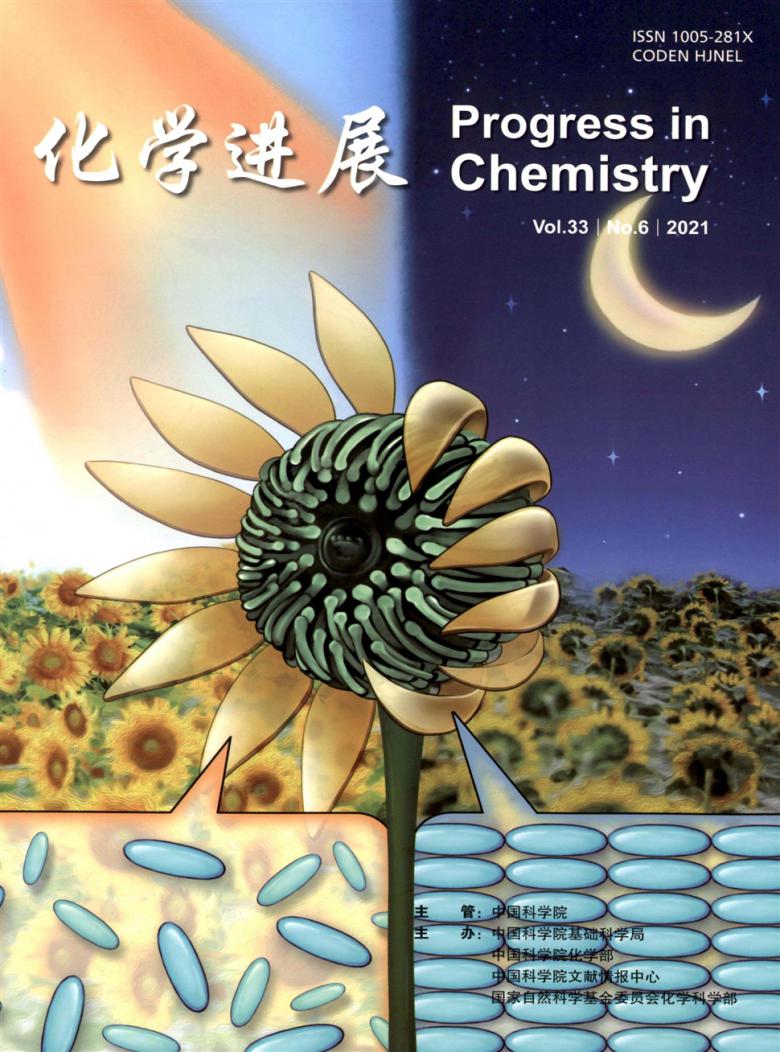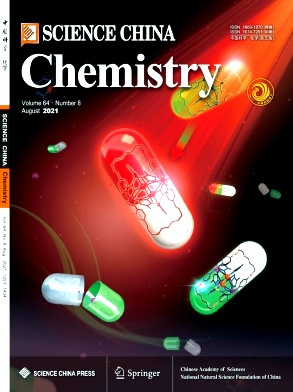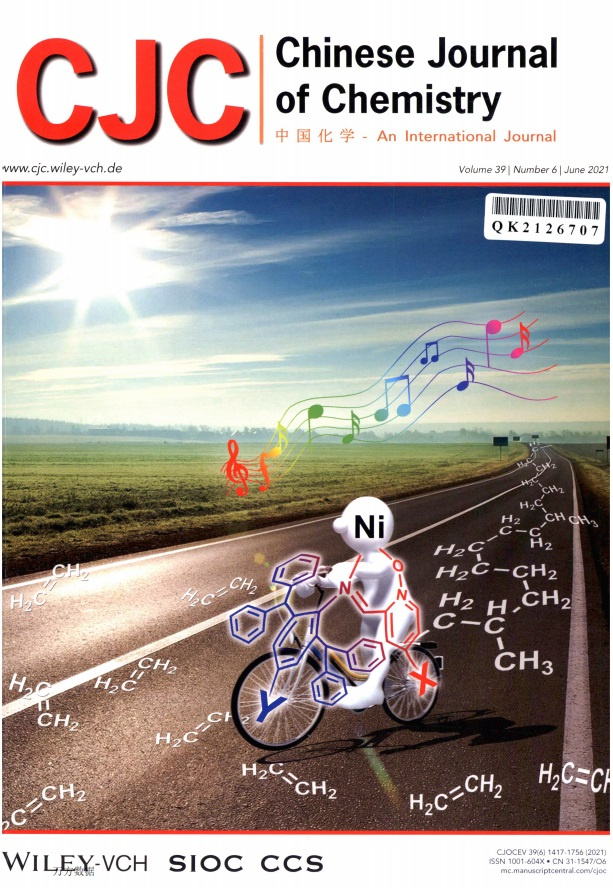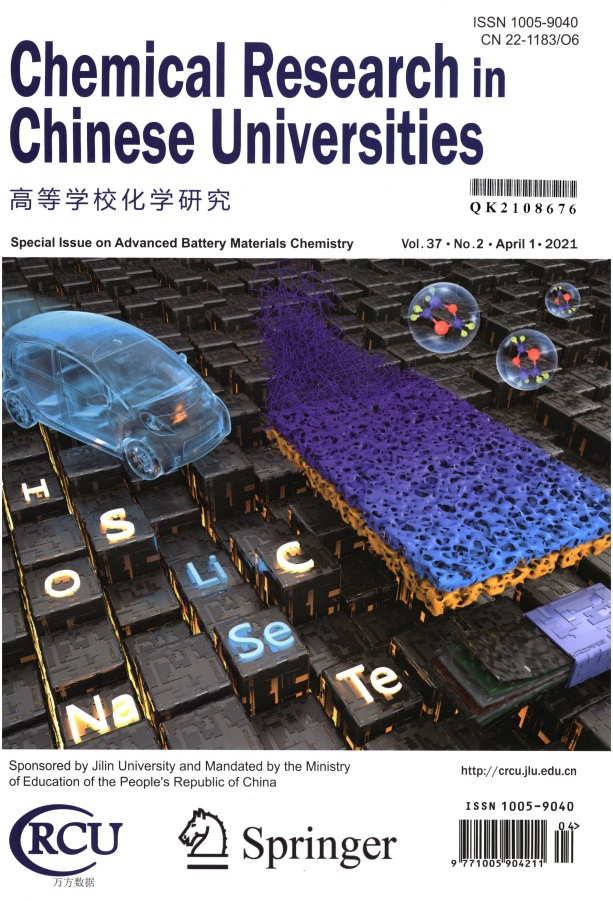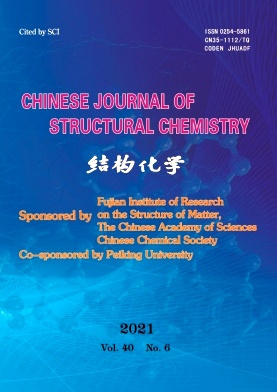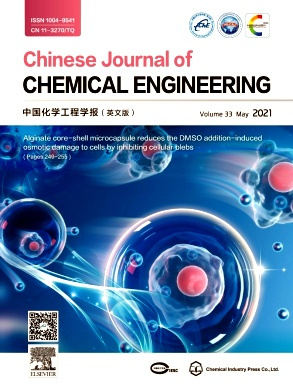
Chinese Journal of Chemical Engineering投稿地址
Chinese Journal of Chemical Engineering详细信息
Chinese Journal of Chemical Engineering
Chinese Journal of Chemical Engineering
Chinese Journal of Chemical Engineering投稿要求
Chinese Journal of Chemical Engineering杂志投稿须知:Title. Concise and informative. Titles are often used in information-retrieval systems. Avoid abbreviations and formulae where possible.? Author names and affiliations. Please clearly indicate the given name(s) and family name(s) of each author and check that all names are accurately spelled. Present the authors' affiliation addresses (where the actual work was done) below the names. Indicate all affiliations with a lower-case superscript letter immediately after the author's name and in front of the appropriate address. Provide the full postal address of each affiliation, including the country name and, if available, the e-mail address of each author.? Corresponding author. Clearly indicate who will handle correspondence at all stages of refereeing and publication, also post-publication. Ensure that the e-mail address is given and that contact details are kept up to date by the corresponding author.? Present/permanent address. If an author has moved since the work described in the article was done, or was visiting at the time, a 'Present address' (or 'Permanent address') may be indicated as a footnote to that author's name. The address at which the author actually did the work must be retained as the main, affiliation address. Superscript Arabic numerals are used for such footnotes.Abstract A concise and factual abstract is required. The abstract should state briefly the purpose of the research, the principal results and major conclusions. An abstract is often presented separately from the article, so it must be able to stand alone. For this reason, References should be avoided, but if essential, then cite the author(s) and year(s). Also, non-standard or uncommon abbreviations should be avoided, but if essential they must be defined at their first mention in the abstract itself.Graphical Abstract A Graphical abstract is optional and should summarize the contents of the article in a concise, pictorial form designed to capture the attention of a wide readership online. Authors must provide images that clearly represent the work described in the article. Graphical abstracts should be submitted as a separate file in the online submission system. Image size: Please provide an image with a minimum of 531 × 1328 pixels (h × w) or proportionally more. The image should be readable at a size of 5 ×13 cm using a regular screen resolution of 96 dpi. Preferred file types: TIFF, EPS, PDF or MS Office files. Highlights Highlights are mandatory for this journal. They consist of a short collection of bullet points that convey the core findings of the article and should be submitted in a separate file in the online submission system. Please use 'Highlights' in the file name and include 3 to 5 bullet points (maximum 85 characters, including spaces, per bullet point). Keywords Authors are invited to submit a maximum of 6 keywords associated with their paper, using British or American spelling and avoiding general and plural terms and multiple concepts (avoid, for example, "and", "of"). Be sparing with abbreviations: only abbreviations firmly established in the field may be eligible. These keywords will be used for indexing purposes. At least 3 of these keywords should be chosen from the list of recommended keywords.Abbreviations Define abbreviations that are not standard in this field in a footnote to be placed on the first page of the article. Such abbreviations that are unavoidable in the abstract must be defined at their first mention there, as well as in the footnote. Ensure consistency of abbreviations throughout the article.Acknowledgements Collate acknowledgements in a separate section at the end of the article before the references and do not, therefore, include them on the title page, as a footnote to the title or otherwise. List here those individuals who provided help during the research (e.g., providing language help, writing assistance or proof reading the article, etc.).Formatting of funding sources List funding sources in this standard way to facilitate compliance to funder's requirements:Funding: This work was supported by the National Institutes of Health [grant numbers xxxx, yyyy]; the Bill & Melinda Gates Foundation, Seattle, WA [grant number zzzz]; and the United States Institutes of Peace [grant number aaaa].It is not necessary to include detailed descriptions on the program or type of grants and awards. When funding is from a block grant or other resources available to a university, college, or other research institution, submit the name of the institute or organization that provided the funding.If no funding has been provided for the research, please include the following sentence:This research did not receive any specific grant from funding agencies in the public, commercial, or not-for-profit sectors.Nomenclature and units Follow internationally accepted rules and conventions: use the international system of units (SI). If other quantities are mentioned, give their equivalent in SI. Prohibit the use of the following non-SI units, e.g. M, ppm, bar, atm, ?, cal, et al. Authors wishing to present a table of nomenclature should do so on the second page of their manuscript.Math formulae Please submit math equations as editable text and not as images. Present simple formulae in line with normal text where possible and use the solidus (/) instead of a horizontal line for small fractional terms, e.g., X/Y. In principle, variables are to be presented in italics. Powers of e are often more conveniently denoted by exp. Number consecutively any equations that have to be displayed separately from the text (if referred to explicitly in the text).Footnotes Footnotes should be used sparingly. Number them consecutively throughout the article. Many word processors can build footnotes into the text, and this feature may be used. Otherwise, please indicate the position of footnotes in the text and list the footnotes themselves separately at the end of the article. Reference Style References should be numbered in the order of appearance. The following are examples of different types of references.
1、 S.M. Kresta, Characterization, measurement and prediction of the turbulent flow in stirred tanks, Ph. D. Thesis,McMaster Univ., Canada?1991.。
2、 Q.Yu, J.T. Matheickal, P. Yin, P. Kaewsarn, Heavy metal uptake capacities of biomass: A comparison,Proceedings of Chemeca'98, Port Douglas, Australia, 1998.。
3、 J.X. Xu, A survey on iterative learning control for nonlinear systems, Int. J. Control, 84 (7) (2001)1275-1294.。
4、 T. Brawn, Extraction Chromatography, Elsevier, Amsterdam?1975.。
5、 S. Osaki, Multistage vortex pump, Japan Pat., 62186095 (1986).
Chinese Journal of Chemical Engineering杂志简介
The Chinese Journal of Chemical Engineering (Bimonthly, started in 1982) is the official journal of the Chemical Industry and Engineering Society of China and published by the Chemical Industry Press. The aim of the journal is to develop the international exchange of scientific and technical information in the field of chemical engineering. It publishes original research papers that cover the major advancements and achievements in chemical engineering in China as well as some articles from overseas contributors. The topics of journal include chemical engineering, chemical technology, biochemical engineering, energy and environmental engineering and other relevant fields. Papers are published on the basis of their relevance to theoretical research, practical application or potential uses in the industry as Research Papers, Research Notes, Chemical Engineering Data and Reviews. Prominent domestic and overseas chemical experts and scholars have been invited to form an International Advisory Board and the Editorial Committee. It enjoys recognition among Chinese academia and industry as a reliable source of information of what is going on in chemical engineering research, both domestic and abroad.
Chinese Journal of Chemical Engineering统计分析
影响因子:指该期刊近两年文献的平均被引用率,即该期刊前两年论文在评价当年每篇论文被引用的平均次数
被引半衰期:衡量期刊老化速度快慢的一种指标,指某一期刊论文在某年被引用的全部次数中,较新的一半被引论文刊载的时间跨度
他引率:期刊被他刊引用的次数占该刊总被引次数的比例用以测度某期刊学术交流的广度、专业面的宽窄以及学科的交叉程度
引用半衰期:指某种期刊在某年中所引用的全部参考文献中较新的一半是在最近多少年时段内刊载的
平均引文数:在给定的时间内,期刊篇均参考文献量,用以测度期刊的平均引文水平,考察期刊吸收信息的能力以及科学交流程度的高低
相关推荐
更多热门评论
Chinese Journal of Chemical Engineering杂志审稿速度还是很快的,编辑也很耐心负责。专家修回意见,比较中肯,有参考价值。按照以往说法,如果是修改后编辑终审,一般问题都不大。所以认真按照专家意见条条回复修改后,即时上传修改稿。很快就收到了收录的好消息
编辑部的老师和审稿专家,编辑部老师对文章的初审速度出奇的快,11-12早上10点投稿,中午14点通过初审,此时便开始外审生涯,30天审稿结束,专家给出的意见是:修改后以研究论文的形式发表,责编意见是:修改后可以发表!
该杂志的投稿系统做得非常不错,初审,主编审定等都会安排具体时间,一般都会提前完成,超过了规划时间作者可以电话询问,编辑部也会给出合理的解释,我的稿件一个月以内就通过初审,退修后很快给出意见录用。
该刊的编辑态度很好,和善并且负责,面对疑问都耐心给我解答!并且编辑部工作人员处理速度也非常快、工作规范,对问题的处理既细心又耐心。非常不错!是一个值得推荐的杂志
在投稿网买了好多书,丰富自己精神世界,每一本都是好书,养成阅读的习惯。《Chinese Journal of Chemical Engineering》集专业性、指导性、服务性、可读性于一体,非常有学术价值。收录了很多优秀的文章。
Chinese Journal of Chemical Engineering总体审稿速度较快,编辑修改太细致了,第一次给该刊投稿,中了!高兴!没过好久就通知录用,修改1次后录用,速度还算快。很感谢编辑。
Chinese Journal of Chemical Engineering审稿人还是比较认真的,给修改的也比较仔细,对创新性要求还算比较高吧,但是说结果是可以预见的有点勉强。推荐除非有比较好的创新性投稿!
Chinese Journal of Chemical Engineering真的是一个非常不错的杂志,审稿流程很是规范、谨慎。编辑态度很好,校稿过程中都会主动打电话过来讨论文章的错误点,非常敬业。
我中了一篇关于临床研究的文章。我觉得编辑的态度还不错,电话通知让修改,并详细说明了如何修改,7月04日提交修改稿,8月24日变为终审中,10月20日变为已录用。编辑部效率很快,赞!审改老师对文章分析也相当透彻,整理出了文章的亮点和不足。非常细致!
审稿速度还是很快的,在我投的几篇中是最快的,编辑很好,打电话咨询的时候,态度非常好,还打电话告诉修改的内容。
常见问题
| Q:论文发表的时候可以一稿多投吗? |
| A:一稿多投的行为是典型的学术不端的行为,是国内外学术界都明令禁止的行为,原因主要在于涉及到文章版权归属的问题,如果作者的文章已经被某个杂志社录用,或者同时被两家杂志社录用,就会涉及到版权纠纷,作为杂志社都会保护本社的合法权益,到这时作者就会比较麻烦,吃官司都是小事儿了,被打入黑名单降级降职影响可就太大了。 |
| Q:职称论文发表对时间有限制吗? |
| A:职称论文发表并没有明确规定截止时间,需要作者结合自己所在地区的具体规定自己安排发表时间,一般职称评审,各地区都会明确规定申报材料的最后期限和截止日期,我们结合这个日期来考虑何时发表文章就可以,大部分地区职称评审都集中在每年的8-10月之间,有的地区要求7月中旬开始交材料,最晚8月底之前,有的则是要求8月中旬交,还有部分地区要求截止时间为申报时间上年的12月31日,所以,各个地区的具体要求并不同,申报者需要在提交材料前确保自己的文章已经见刊并且被相应的数据库检索即可。 |
| Q:网上发表论文如何防骗?可靠网站与可疑网站如何区分? |
| A:由于发表论文的需求远远多于杂志版面的供应,再加上众所周知的审稿难!审稿慢!选择论文发表网站发表表论文确实能解决以上问题。卖方市场的出现加之发表论文的刚性需求,就导致出现先付款后发表的现状。论文发表网站正规与否是通过网站从始至终所提供服务体现出来的,任何交易只要存在时间差都会有风险,但这个风险是可以通过您的智慧来避免的。因为不是所有论文网站都是骗子,你要做的就是过滤掉没保障的网站,选择可靠的论文发表网站! |
| Q:一般期刊需要提前多久准备? |
| A:省级、国家级期刊建议至少提前6个月准备。一般来讲,杂志社为了确保每期杂志正常出刊,都会提前将当期之后1-3个月的稿件提前安排好,而一些创刊较早,认可度更高的热门期刊,来稿量较大,发表周期可能就会更久。提前准备,意味着杂志的可选择性更多。 |
| Q:核心期刊需要提前多久准备? |
| A:核心期刊建议至少提前12个月准备,核心期刊正常的审稿周期为1-3个月,且审核严格,退稿、返修几率更大,这意味着在流程上耗费的时间更久,且核心期刊版面有限,投稿竞争更加激烈,即使被录用,排刊也比普通期刊晚很多,因此需要更早准备。 |
